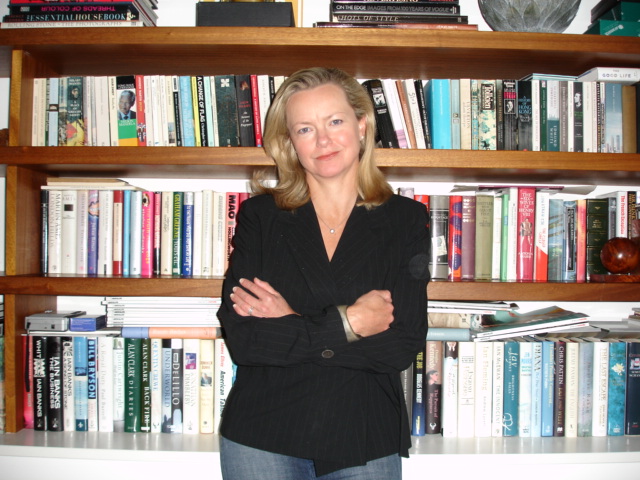
"Figure at an Inquiry No 2" 2010
Image (c) - John Keane, Flowers Galleries, London
Are you going to the Hockney? Well, of course you are. It’s the blockbuster of the moment and jolly good fun it is too. Most of the critics seemed to love it and I have to admit that I loved it too.
The majority of the pictures on show are of one of my own favourite parts of the world: the Yorkshire Wolds, just inland from Bridlington where Hockney lives these days, in what used to be called the East Riding. It is a subtly beguiling, still virtually undiscovered, stunning swathe of proper English countryside. I urge you to go.
I am not so sure I urge you to go to the Royal Academy however. Spectacular as the humongous landscapes and ingenious i-Pad drawings are, it is almost impossible to get a proper look at them, given the number of people the Academy seems determined to squish into the show. In many cases, you are simply not able to get far enough away from the bigger pictures to appreciate them. Besides, advance tickets are already reportedly sold out until March.
I do, however, urge you to go to another show, just around the corner from the RA, in Cork Street. Flowers Gallery is staging the first solo show for three years of paintings by John Keane (b.1954), the sometimes controversial and always thought-provoking British artist who first came to international attention with his appointment as the Imperial War Museum’s official artist during the Gulf War.
I have already written on this forum about Keane’s arresting 2006 series entitled “Guantanamerica”. The new exhibition, “Scratching the Surface, Joining the Dots” which runs until February 11th, seems to me to mark a stylistic development for the always experimental Keane but it retains his markedly political themes.
Many of the new paintings refer to recent events in the Middle East, with a particularly striking series of images of Tony Blair’s appearance in front of the Chilcot Inquiry into the Iraq War (see above). I was particularly struck by a rather smaller canvas, depicting just the former prime minister’s hands. Next time you see Tony on telly, just keep an eye on them. Those very mobile hands speak volumes.
The images of Tony being interrogated also strike a theme which is topical and current, as we continue – and will carry on for many months to come - watching the great and the good of Fleet Street and its putative environs giving their own evidence to the Leveson Inquiry into the Culture, Practice and Ethics of the Press.
But Keane has always been a particularly prescient artist. More than a dozen years ago, his 1999 series entitled: “Making a Killing” featured ever so slightly grotesque portraits of Rupert Murdoch, Diana, Princess of Wales and Charles Saatchi.
The title of the series was always a bit too bald for me but it did not detract in any way from the power of the images, many of them abstracted from extremely familiar television shots, such as the doe-eyed Diana of the infamous “three-in-the-marriage” Panorama interview with Martin Bashir.
Keane’s latest works are more powerful still, with the commentary all the more potent for its subtlety. I had to stare at one canvas for ages before I realised why the scene looked so disturbingly familiar. Finally, it hit me: it was a still from the “Rules of Engagement” video of a 2007 US helicopter attack in Baghdad which killed 12 people, including two Reuters staffers. The video was, of course, controversially released to the world by Wikileaks in 2010.
Keane’s two images from the video, which remains at the centre of the global debate on censorship, freedom of expression and the internet are entitled “Hindsight”. Whatever your own stance on the latter debate, I sincerely hope you can find the time to view this important and stimulating exhibition.











